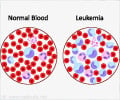The rates of increase in black women using sentinel lymph node biopsy (SLNB) to stage early breast cancer is slower than white women, during 2002 to 2007.

Researchers identified cases of nonmetastatic, node-negative breast cancer in women 66 years of age or older from 2002 through 2007. Of the 31,274 women identified, 1,767 (5.6 percent) were black, 27,856 (89.1 percent) were white and 1,651 (5.3 percent) were of other or unknown race.
SLNB was performed in 73.7 percent of white patients and 62.4 percent of black patients. While the use of SLNB increased by year for both black and white patients, blacks were 12 percent less likely than whites throughout the study period to undergo SLNB. The authors suggest that adoption of SLNB in blacks patients lagged two to three years behind its adoption in white patients. The 5-year cumulative lymphedema risk was 8.2 percent in whites and 12.3 percent in blacks. The authors note socioeconomic and geographic factors were associated with lower SLNB use including insurance coverage through Medicaid, living in areas with lower education or income levels, and living in areas with fewer surgeons.
"These findings emphasize that not all newly developed techniques in breast cancer care are made available in a timely fashion to all eligible patients. As new techniques continue to be developed, focused educational interventions must be developed to ensure that these techniques reach historically disadvantaged patients to avoid disparities in care. More contemporary data will be needed to determine whether this disparity still exists in black patients and other at-risk minorities."
Author: Dalliah M. Black, M.D., of the University of Texas MD Anderson Cancer Center, Houston, Texas.
(JAMA Surgery. Published online June 18, 2014. doi:10.1001/jamasurg.2014.23. Available pre-embargo to the media at media.jamanetwork.com.)
Advertisement
Commentary: Racial Disparities in Breast Cancer … More Bad News
Advertisement
"In the study by Black and colleagues, it seems likely that patients undergoing axillary lymph node dissection, when sentinel node biopsy may have been indicated, were cared for at institutions without lymphedema screening protocols. … In black women, lymphedema screening may be especially relevant; Black et al have demonstrated that this population is at highest risk," they continue.
"Black and colleagues have highlighted another disparity in breast cancer care and its associated morbidity. With this information in hand, we should seek to eliminate these differences as much as possible."
(JAMA Surgery. Published online June 18, 2014. doi:10.1001/jamasurg.2014.44. Available pre-embargo to the media at media.jamanetwork.com.)
Editor's Note: Please see the article for additional information, including other authors, author contributions and affiliations, financial disclosures, funding and support, etc.
Source-Eurekalert















